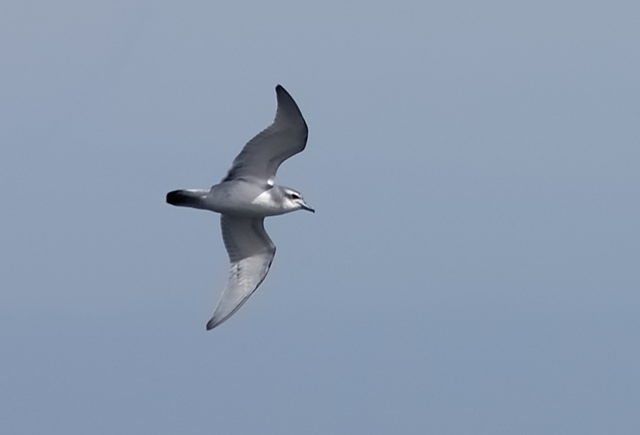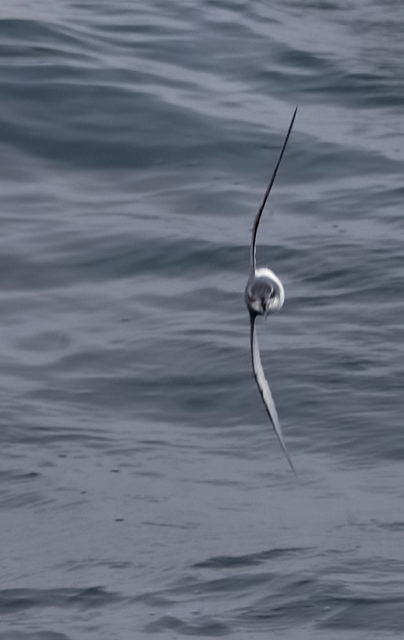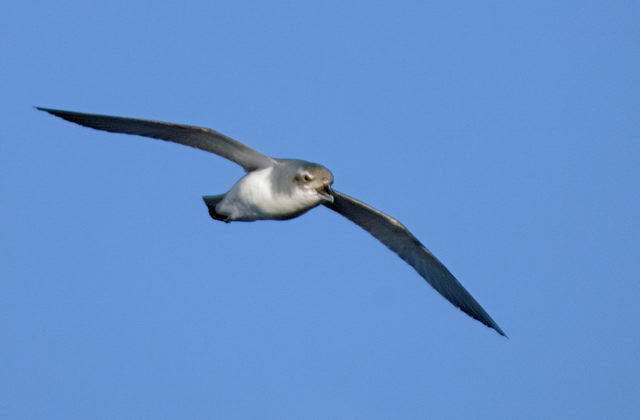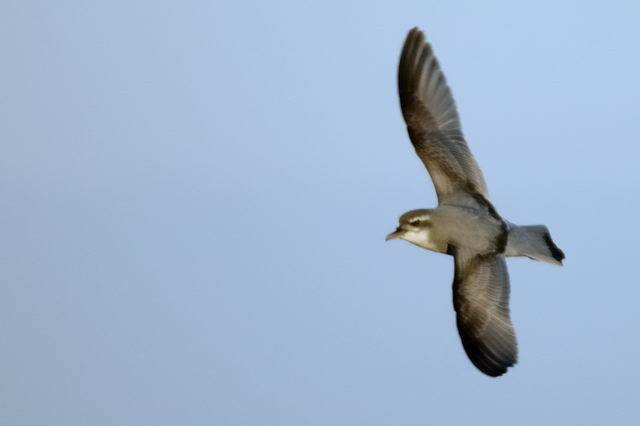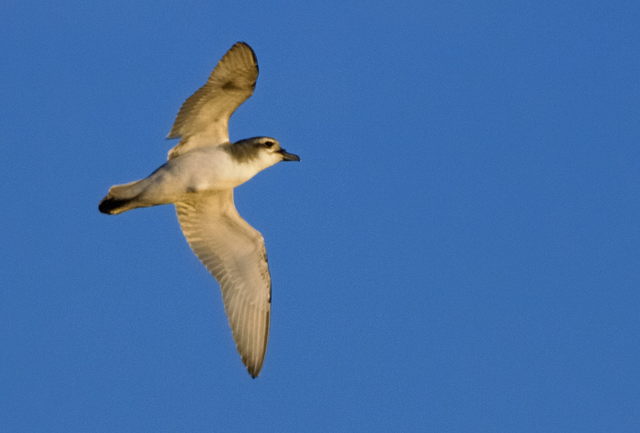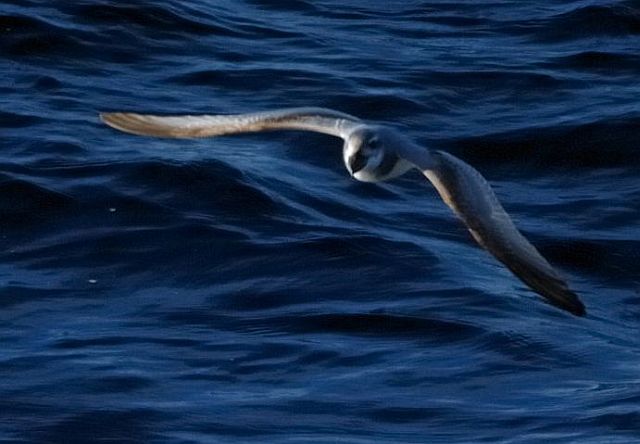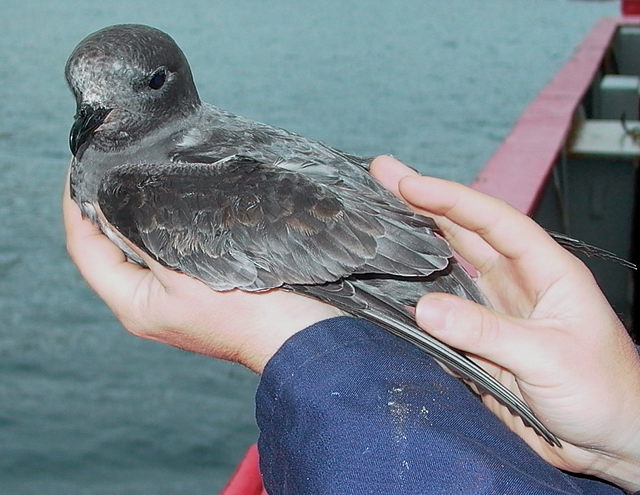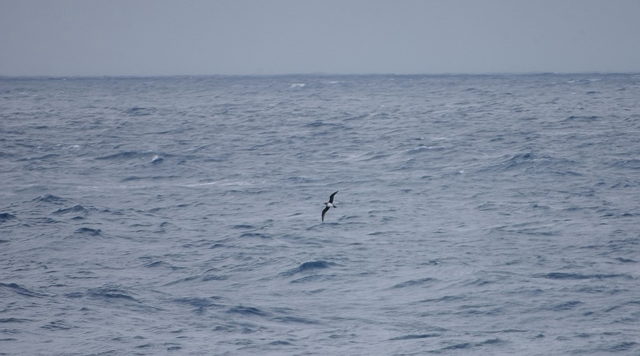Order: Procellariiformes. Family: Procellariidae
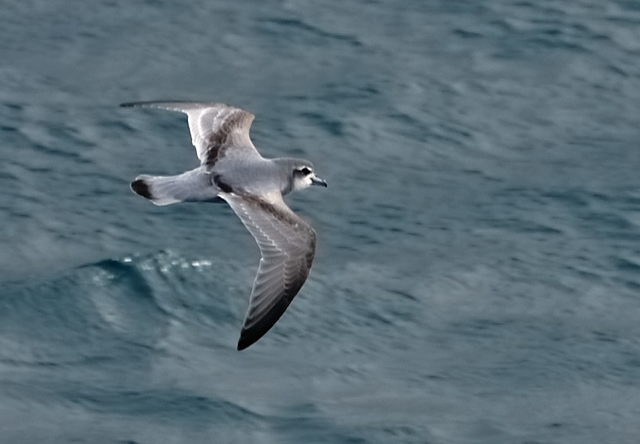
Description
25-28 cm. A small, blue-grey prion with a well-defined, dark 'M' across the upperwing. Fairly broad black tip to the grey wedge-shaped tail. Underparts and underwings white. Dusky grey patches on sides of the breast. Blue-grey bill is moderately wide when viewed from above. White supercilium and dark line through the eye. Blue feet. Like all prions, flight fluttery and erratic.
Similar species: The Antarctic Prion is most similar in bill structure to Salvin’s Prion, and two also have very similar facial markings. The main characters used to distinguish them in the hand are that the Antarctic prion generally has a brighter blue bill with a larger nail at the tip, straighter sides to the bill when viewed from above, and lamellae (comb-like filters) not visible from the side when the bill is closed. In contrast, Salvin’s Prion has a slightly larger grey-blue bill with relatively weaker nail, bowed sides to the bill when viewed from above, and lamellae visible when the bill is closed. Bill measurements of the two overlap (Salvin’s Prion 13.5-17.5 mm wide; Antarctic Prion 11-15.5 mm wide). Slender-billed Prion has paler facial markings and a narrower bill (9.3-12.5 mm).
Distribution
Breeds on Antarctica and sub-Antarctic islands, migrating north to temperate southern oceans when gets too cold. It is seasonally abundant in across most of southern Africa's waters, while more scarce off the east and north-western coasts.
Habitat
Oceanic.
Movements and migrations
Breeds from October-April, after which it heads north to warmer waters, staying in southern Africa from about May-August.
Diet
Crustaceans, celaphopods, gastropods & small fish.
Breeding
Antarctic Prion arrive at their colonies in October to early November. They nest on exposed rock faces of cliffs, in cavities under boulders or in short twisting burrows in soft grass-covered slopes. Experienced breeders are the first to appear, and often return to the same site they used the previous year. The females will leave the nesting site for approximately 14 days before laying, but the males will reappear at night keeping the nest hole free from snow. One egg is laid in December, and hatches in late January to mid-February. The egg is incubated by both members of the pair for a total of 45 days. The male takes the first shift. Departure of the chicks and adults occurs in mid-March, 45-55 days after hatching. Adults and fledglings move into subantarctic and temperate waters for the winter months, regularly reaching Australia
Status
Common Winter visitor offshore.



